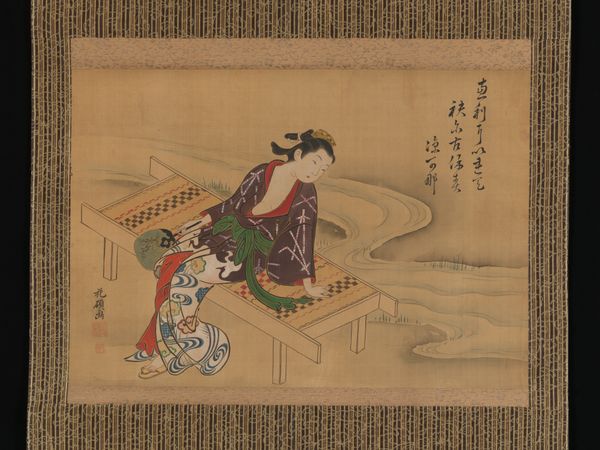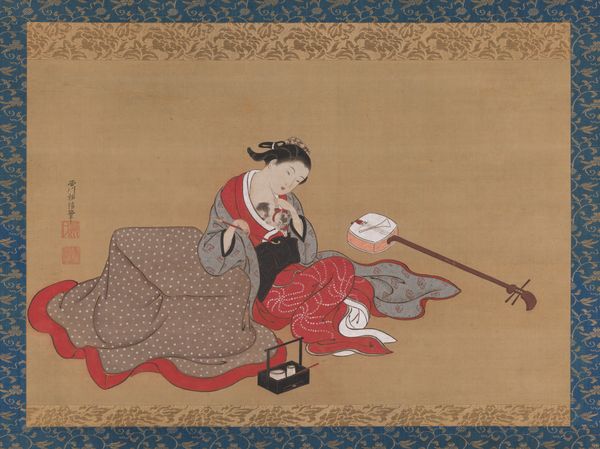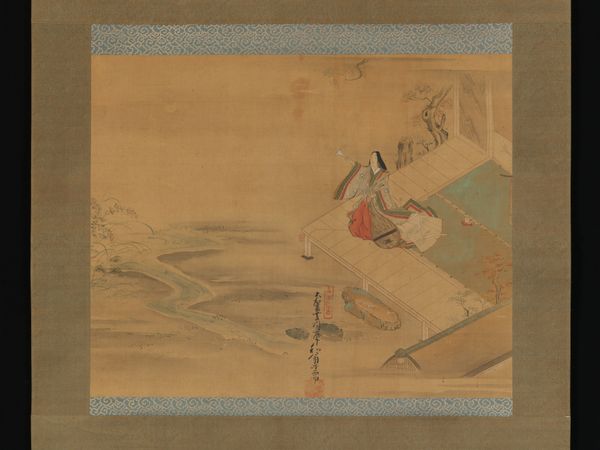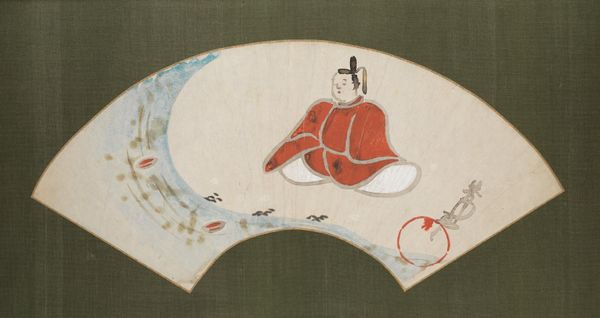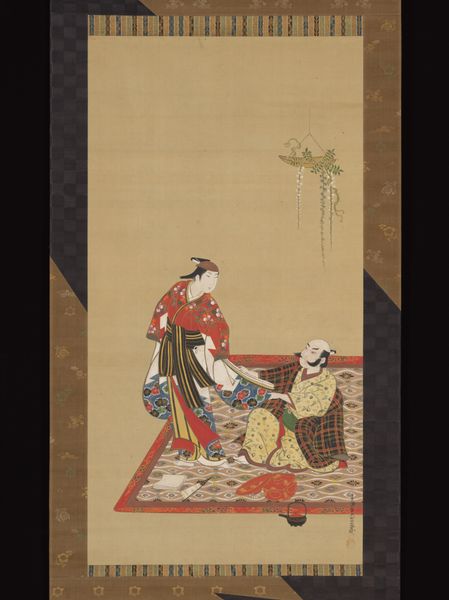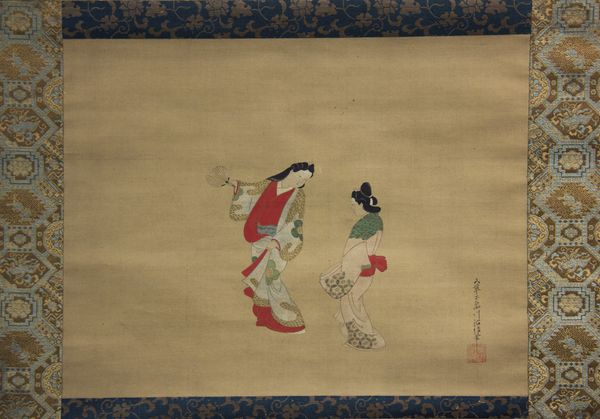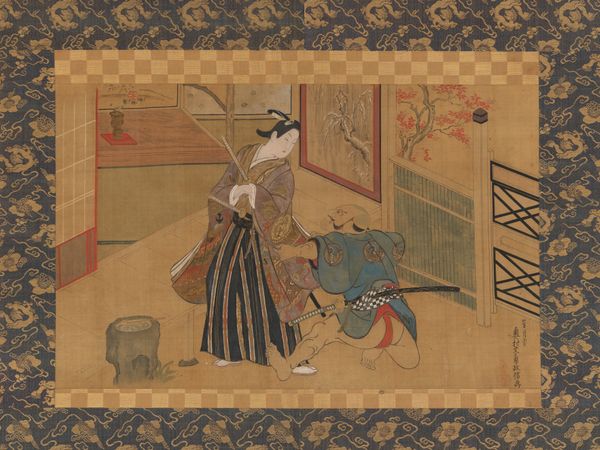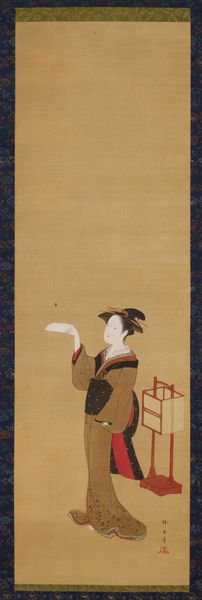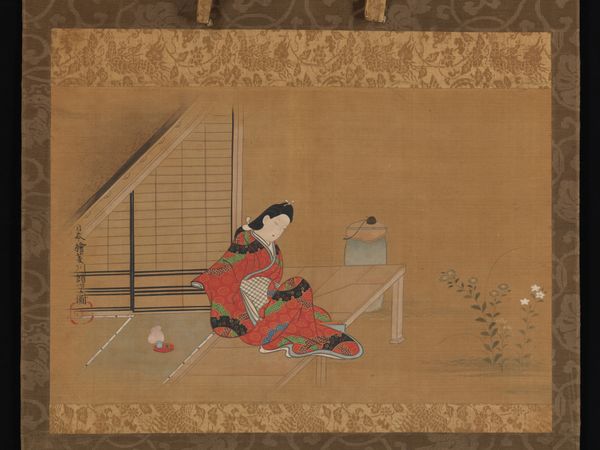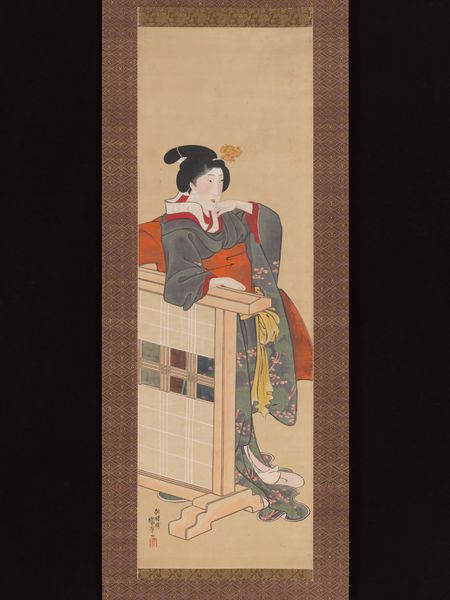
textile, ink
#
toned paper
#
water colours
#
pastel soft colours
#
muted colour palette
#
asian-art
#
textile
#
leaf
#
japan
#
folk art
#
text
#
handmade artwork painting
#
ink
#
coffee painting
#
watercolour bleed
#
watercolour illustration
#
watercolor
Dimensions: 30.4 × 37.1 cm (12 × 14 5/8 in.), including mount and knobs: 127.6 × 56.2 cm (50 1/4 × 22 1/8 in.)
Copyright: Public Domain
Editor: This is *A Beauty Behind a Screen*, a textile artwork with ink and watercolors from around 1750 by Miyagawa Chōshun, and it’s currently held at The Art Institute of Chicago. It’s quite striking—the muted color palette gives the piece an incredibly serene and quiet mood. What layers do you see when you look at this piece? Curator: This work opens a window, doesn't it, into the complex lives of women within the Edo period. This ‘beauty’ isn’t merely an object of aesthetic admiration. Consider the screen behind her. It's a portal, right? Reflecting not just an external landscape but perhaps also her interior world and the limitations placed upon her. Look closely at the posture—there’s a quiet defiance there, a claim to space within the constraints. How does her gaze, or lack thereof, complicate the narrative for you? Editor: I hadn't thought about it that way. The downcast eyes initially struck me as demure, but thinking about societal expectations, they could also signify resistance, like a refusal to engage with the viewer on the terms that are expected. And, yes, I was interpreting the screen as simply decorative, but it acts like a metaphor. Curator: Exactly. Consider also the materials. The delicacy of the textile, the fragility of the ink and watercolor – are these mirroring something about her perceived role, perhaps? The beauty is intentional, but let's also ask: what are the politics embedded in this ideal of feminine beauty? How might the artist, through the composition, be subtly critiquing or reinforcing these standards? Editor: That’s really interesting to consider. I hadn’t approached the artwork thinking about a critical lens, only formal artistic elements. It’s incredible how much richer the work becomes when viewed as a product of—and potentially a commentary on—its time. Curator: Precisely. By integrating considerations of gender, class, and social structures, we unveil powerful narratives embedded within the art. Editor: Thank you, this has helped me consider it with new eyes. Curator: Absolutely, and thanks for offering fresh questions. Let’s continue thinking critically about the stories these works carry.
Comments
No comments
Be the first to comment and join the conversation on the ultimate creative platform.
